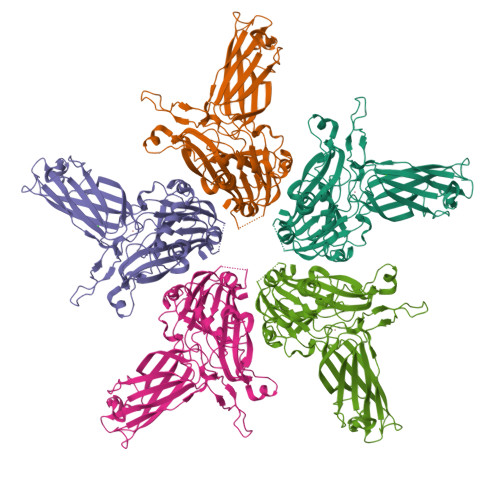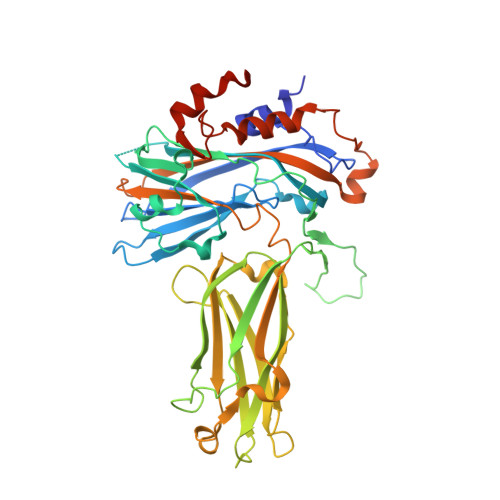Crystal structure of an aquabirnavirus particle: insights into antigenic diversity and virulence determinism
Coulibaly, F., Chevalier, C., Delmas, B., Rey, F.A.(2010) J Virol 84: 1792-1799
- PubMed: 20007275
- DOI: https://doi.org/10.1128/JVI.01536-09
- Primary Citation of Related Structures:
3IDE - PubMed Abstract:
Infectious pancreatic necrosis virus (IPNV), a pathogen of salmon and trout, imposes a severe toll on the aquaculture and sea farming industries. IPNV belongs to the Aquabirnavirus genus in the Birnaviridae family of bisegmented double-stranded RNA viruses. The virions are nonenveloped with a T=13l icosahedral capsid made by the coat protein VP2, the three-dimensional (3D) organization of which is known in detail for the family prototype, the infectious bursal disease virus (IBDV) of poultry. A salient feature of the birnavirus architecture is the presence of 260 trimeric spikes formed by VP2, projecting radially from the capsid. The spikes carry the principal antigenic sites as well as virulence and cell adaptation determinants. We report here the 3.4-A resolution crystal structure of a subviral particle (SVP) of IPNV, containing 20 VP2 trimers organized with icosahedral symmetry. We show that, as expected, the SVPs have a very similar organization to the IBDV counterparts, with VP2 exhibiting the same overall 3D fold. However, the spikes are significantly different, displaying a more compact organization with tighter packing about the molecular 3-fold axis. Amino acids controlling virulence and cell culture adaptation cluster differently at the top of the spike, i.e., in a central bowl in IBDV and at the periphery in IPNV. In contrast, the spike base features an exposed groove, conserved across birnavirus genera, which contains an integrin-binding motif. Thus, in addition to revealing the viral antigenic determinants, the structure suggests that birnaviruses interact with different receptors for attachment and for cell internalization during entry.
Organizational Affiliation:
CNRS/INRA UMR 2472/1157 and IFR 115, Laboratoire de Virologie Moléculaire et Structurale, 1 Avenue de la Terrasse, F-91198 Gif-sur-Yvette cedex, France.




















